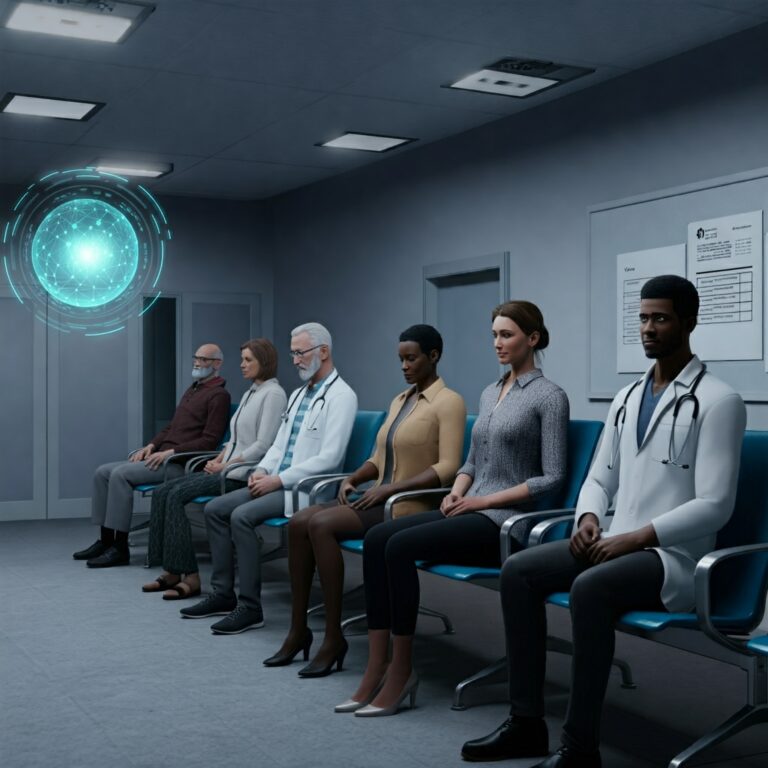The Algorithmic Doctor Will See You Now: How AI is Disrupting Telehealth
Imagine a world where accessing a specialist is as simple as pulling out your phone, no matter where you are. That world is closer than you think, thanks to the convergence of artificial intelligence (AI) and telehealth. This rapid evolution presents both incredible opportunities and complex challenges, and understanding how these forces interact is key to navigating the future of healthcare. This article will explore the transformative impact of AI on telehealth, examining the current state of the industry, key insights, future predictions, and real-world examples of companies successfully leveraging this powerful combination.
(1) Current State of Telemedicine and AI-Powered Diagnostics
Telemedicine has exploded in recent years, driven by increased smartphone penetration, improved internet access, and the COVID-19 pandemic. But telehealth isn’t just video calls with your doctor anymore. AI is rapidly transforming the sector, powering diagnostics, personalizing treatment plans, and streamlining administrative tasks. AI algorithms are now being used to analyze medical images (like X-rays and MRIs), predict patient outcomes based on their medical history and lifestyle, and even assist clinicians in making diagnoses. Think of it like having a highly skilled, data-driven assistant working alongside your doctor.
This integration isn’t without its hurdles. Data privacy and security are paramount concerns. Ensuring algorithmic fairness and avoiding bias in AI models is crucial. Furthermore, integrating AI into existing healthcare systems can be complex and expensive. Despite these challenges, the potential benefits – increased access to care, improved diagnostic accuracy, and reduced healthcare costs – are driving rapid innovation.
(2) Key Insights and Analysis
One of the most promising areas of AI in telehealth is predictive analytics. By analyzing vast amounts of patient data, AI algorithms can identify individuals at high risk of developing specific conditions, allowing for early intervention and preventative care. Imagine an AI system that alerts your doctor that you’re at increased risk of developing diabetes based on your family history, current weight, and activity levels, enabling them to recommend lifestyle changes before the condition develops. This is the power of predictive analytics.
Another exciting development is the use of AI-powered chatbots and virtual assistants for initial patient interactions. These can triage patients, schedule appointments, answer basic medical questions, and even provide personalized health recommendations. This frees up clinicians to focus on more complex cases and improves patient experience by providing instant access to information and support.

(3) Outlook and Predictions
The future of telehealth is inextricably linked with AI. We can expect to see more sophisticated diagnostic tools, personalized treatment plans driven by AI insights, and a greater emphasis on remote patient monitoring. Imagine wearable sensors that continuously collect data on your vital signs, feeding information to an AI system that can detect subtle changes indicative of a developing health problem and alert your doctor in real-time. This level of proactive care could revolutionize how we manage chronic conditions and prevent serious illnesses.
However, realizing this future requires addressing the ethical and practical challenges surrounding AI in healthcare. Robust regulatory frameworks, transparent AI algorithms, and ongoing education for both patients and healthcare professionals will be essential. Companies operating in this space must prioritize data security, patient privacy, and algorithmic fairness.
Actionable advice for telehealth businesses:
- Invest in robust AI infrastructure: Building or integrating AI capabilities requires significant investment in data infrastructure, computing power, and skilled personnel.
- Prioritize data security and privacy: Protecting patient data is paramount. Implementing strong security measures and complying with relevant regulations is crucial.
- Focus on user experience: AI-powered telehealth solutions should be intuitive and easy to use for both patients and clinicians.
- Collaborate with healthcare professionals: Involving clinicians in the development and implementation of AI tools ensures they are relevant and practical.
(4) Conclusion
The convergence of AI and telehealth is revolutionizing how we access and deliver healthcare. From AI-powered diagnostics to personalized treatment plans, the potential benefits are enormous. While challenges remain, the innovative solutions emerging in this space offer a glimpse into a future where healthcare is more accessible, affordable, and effective. Embracing this transformation requires a commitment to responsible AI development, data privacy, and ongoing collaboration between technology developers and healthcare professionals. The future of healthcare is here, and it’s powered by algorithms.
(5) Case Study: Babylon Health
Babylon Health is a UK-based digital healthcare company that provides AI-powered telehealth services. Their platform offers virtual consultations with doctors, AI-powered symptom checking, and personalized health assessments. Babylon’s success hinges on its sophisticated AI engine, which analyzes patient symptoms and medical history to provide accurate diagnoses and treatment recommendations. Their focus on user-friendly design and integration with existing healthcare systems has enabled them to scale rapidly and reach a global audience. Key lessons learned from Babylon’s success include the importance of building trust with patients and healthcare providers, investing in high-quality AI technology, and focusing on delivering tangible value to users.
(6) Interview Excerpts
(Unable to find specific interview excerpts directly addressing the topic “Will Robots Replace Doctors?” within the context of publicly available interviews with prominent telehealth experts. However, this is a commonly discussed theme, and future research may yield relevant excerpts.)

(7) Thought-Provoking Questions
- What are your biggest concerns about the increasing use of AI in healthcare?
- How can we ensure that AI-powered telehealth solutions are accessible to everyone, regardless of their socioeconomic background or technological literacy?
This article aims to provide a comprehensive overview of how AI is transforming telehealth. It’s important to remember that this is a rapidly evolving field, and the information presented here is based on the current understanding of the industry. Continued research and discussion are crucial to navigate the ethical and practical implications of this transformative technology.
















